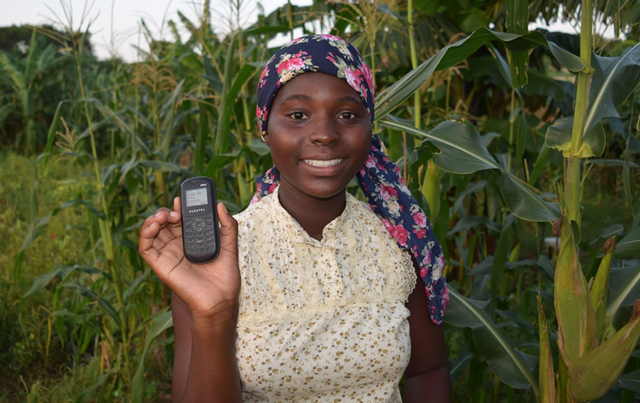
What is e-Agriculture Strategy?
An e-Agriculture strategy is using innovative digital technology solutions like precision agriculture, drones, big data, predictive analytics, and blockchain to improve social and economic outcomes for smallholder farmers.
e-Agriculture programs aim to increase food security by helping smallholder farmers improve modern ICT4Ag farming methods and access to markets. Agricultural ICT4D strategies encompass the full agricultural value chain and includes adjacent technologies like digital financial services and geographic information systems.
Communication in Agriculture
Smallholder farmers have limited knowledge, services, and technologies available to them. They typically need support to adopt modern farming methodologies.
Agriculture technology solutions focus on extension services for farmers to adopt new technologies and innovation. ICTs can amplify the efforts of the extension agents to help farmers plan what crops to grow, source inputs for crop cultivation, and selling their produce in local market.
Chatbots offer an exciting opportunity for governments to engage farmers on the social media platforms where farmers already congregate. For example:
- Facebook chatbots are a popular way to answer basic questions or help farmers apply for government support services.
- SMS text message chatbots can also help private sector companies develop new business leads and educate extension agents on their services.
ICT communication tools can play a crucial role in supporting farmers to access new inputs, credit, and markets with personalized and customized services.
Examples of e-Agriculture Programs
The potential to achieve high impact at the farm-level requires appropriate technology and adoption methodologies. International development organizations can use e-Agriculture communication programs like those below to support ICTforAg value chain ecosystems in developing countries.
Digital agriculture holds great potential for smallholder farmers. It can improve agricultural productivity and help farmers cope with extreme climatic events....
Published on: Feb 28 2024 by Guest Writer - Comments Off on New USAID Toolkit on Inclusive AgriTech Digital Solution Design
Digital development solutions have become pervasive around the world, including within resilience, environment, and food security development efforts supported...
In recent years, Africa has faced significant challenges in achieving food security, a situation exacerbated by factors such as climate change, population growth,...
A few months ago, I was in Pakistan working with my colleagues on a rapid landscaping of AI in Agriculture. We decided to put ChatGPT (v3.5) to a simple test. We...
Published on: Sep 28 2023 by Wayan Vota - Comments Off on Apply Now: $50,000 Climate Resilience AI Solution Seed Funding
Climate change is one of the most critical challenges of our time, particularly for rural communities in Asia, Africa, Latin America, the Caribbean and beyond....
Increasing women’s participation in digital agri-food advisory services and programs improves gender equality and is a strategic approach to improving agricultural...
ICTs and smallholder farmers’ livelihood improvement in Tanzania builds on secondary data sources and in-depth interviews to explore the role of ICTs in promoting...
Published on: Jun 28 2023 by Guest Writer - Comments Off on Why Artificial Intelligence Mattes for Smallholder Farmers in LMICs
The Age of Artificial Intelligence (AI) is upon us – driven by unprecedented rates of innovation and adoption. Interest in AI has exploded as ChatGPT continues...
Published on: Apr 12 2023 by Guest Writer - Comments Off on 9 Examples of IoT Solutions for Smart Agriculture Services in LMICs
Internet of Things (IoT) solutions are a key part of smart farming initiatives, which use on-farm and remote sensors to generate and transmit data about a specific...
Published on: Feb 22 2023 by Guest Writer - Comments Off on Very Accurate Artificial Intelligence Agricultural Advice in Thailand
The Department of Agriculture Extension (DOAE) at the Ministry of Agriculture in Thailand is among the first government agencies in the country to adopt Artificial...












